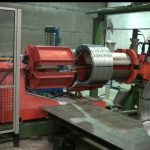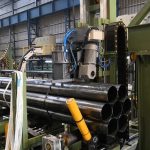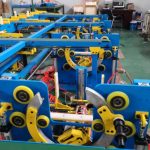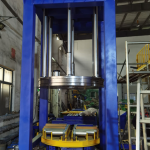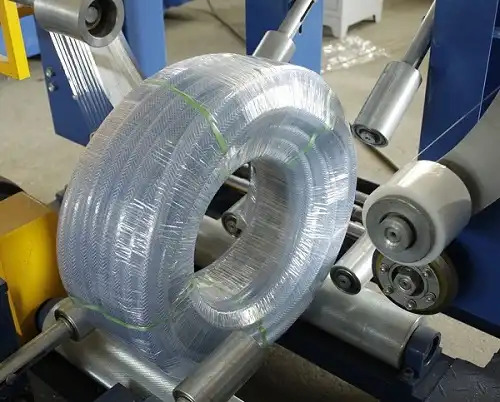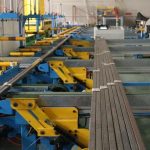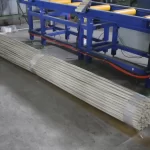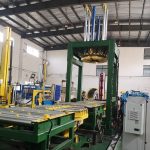Automatic wire compactors and strapping machines come in various sizes and designs, depending on the specific application and the volume of wires or cables that need to be bundled.
How to Find the Best Automatic Wire Compactor and Strapping Machine
In industries like metalworking, electrical, and manufacturing, managing wire bundles effectively is essential for ensuring smooth operations. As wire production processes advance, the need for automated solutions has grown significantly. Among the most critical machines for these industries are automatic wire compactors and strapping machines. These machines streamline the process of bundling and securing wire, offering improved efficiency, safety, and product integrity. But how do you choose the right one? In this article, we’ll dive into the key considerations when selecting the best automatic wire compactor and strapping machine, providing in-depth analysis to help you make an informed decision.
1. Understanding the Role of an Automatic Wire Compactor and Strapping Machine
The automatic wire compactor is a machine designed to compress large amounts of wire into compact bundles, while the strapping machine secures the bundles with straps or bands to ensure they remain intact during storage and transportation. This combination is essential for industries that deal with high volumes of wire, as it allows for safe, space-efficient, and damage-free handling of wire products.
In many applications, manual bundling and strapping are not only labor-intensive but also prone to errors. An automatic system provides consistent quality and reduces the need for human intervention, improving both productivity and worker safety.
2. Why Automation Matters in Wire Compaction and Strapping
Automation has revolutionized nearly every industry, and wire management is no exception. The integration of automated systems into wire compaction and strapping processes brings several key advantages:
- Consistency: Automation ensures uniform compaction and secure strapping, eliminating the variability often seen with manual methods.
- Speed: Automated machines can handle more wire in less time, boosting overall production rates and minimizing bottlenecks in the workflow.
- Reduced Labor Costs: By minimizing the need for manual labor, companies can cut down on labor expenses, allocate employees to more value-added tasks, and reduce the risk of injuries caused by repetitive manual handling.
- Improved Safety: Automation reduces the risk of human error, which can lead to accidents, especially when handling heavy wire bundles.
These benefits make an automatic wire compactor and strapping machine an essential investment for businesses looking to streamline their operations.
3. Key Features to Look for in an Automatic Wire Compactor
When searching for the right automatic wire compactor, it’s important to evaluate the key features that will ensure efficiency and reliability in your operations. Some of the most important features to consider include:
- Compression Force: The compactor should provide sufficient force to compress the wire into a tight bundle, which minimizes storage space and makes the bundles easier to handle. Machines with adjustable force settings allow you to customize the compression based on the type of wire being processed.
- Bundle Size Capabilities: Different industries and applications require different bundle sizes. Ensure that the compactor can accommodate the sizes you need for your specific wire products.
- Material Compatibility: The machine should be compatible with a variety of wire types, including copper, aluminum, and steel, ensuring versatility across different projects.
- Automatic Ejection System: This feature improves efficiency by automatically ejecting the compressed bundle once the process is complete, reducing the need for manual intervention.
4. Choosing the Right Automatic Strapping Machine for Your Wire Bundles
While the compactor is responsible for bundling the wire, the strapping machine ensures the bundle stays intact. Choosing the right automatic strapping machine requires attention to several key aspects:
- Strap Tension Control: Different wire bundles may require different tension levels. A machine with adjustable tension control ensures that the strap is neither too loose (risking instability) nor too tight (which could damage the wire).
- Speed of Operation: Strapping speed is a critical factor, especially for high-volume operations. Look for machines that offer fast and reliable strapping without compromising on quality.
- Type of Strap Material: Wire bundles can be strapped using various materials, such as steel, polyester, or polypropylene. The right material depends on the weight of the bundle and the level of protection required.
- Durability and Build Quality: The strapping machine should be built from robust materials that can withstand the rigors of industrial use. Stainless steel or heavy-duty aluminum frames are ideal for long-term durability.
5. Customization Options for Different Wire Types and Applications
One of the most important factors in choosing a wire compactor and strapping machine is ensuring it can be customized to meet the specific needs of your operation. Different wire materials, diameters, and bundling requirements may necessitate varying machine settings. Customizable features to look for include:
- Adjustable Compression Levels: This allows the machine to handle both delicate and heavy-duty wires without causing damage or over-compressing.
- Variable Strap Widths: Strapping machines that allow for different strap widths give you the flexibility to secure a range of bundle sizes effectively.
- Optional Add-Ons: Some machines offer add-ons like integrated scales, label printers, or conveyors to streamline your entire bundling and packaging process further.
Customization ensures that your wire bundles are handled with care, reducing the risk of damage and ensuring maximum efficiency.
6. Assessing the Throughput and Efficiency of the Machine
When evaluating a potential purchase, one of the most critical factors is the machine’s throughput, or how many wire bundles it can process per hour. The throughput capacity should align with your production demands. Key factors affecting throughput include:
- Cycle Time: The time it takes for the machine to compact and strap a bundle. Faster cycle times mean higher throughput, which is essential for large-scale operations.
- Automation Integration: Machines with fully automated systems can process wire bundles more efficiently, often with minimal human intervention.
- Energy Efficiency: Consider machines that use less energy, as this can reduce your operational costs over time without sacrificing performance.
7. Safety Features to Consider
Handling wire bundles can be dangerous, especially when dealing with heavy loads or sharp edges. Therefore, any automatic wire compactor and strapping machine must come equipped with robust safety features, including:
- Emergency Stop Button: This allows operators to halt the machine instantly in case of an emergency, preventing accidents.
- Protective Guards: Machines should have physical barriers to prevent access to moving parts during operation.
- Load Sensors: These sensors detect if the wire bundle is improperly placed or overloaded, stopping the machine before any damage occurs.
Always ensure that the machine meets the safety regulations in your industry and region, such as OSHA or CE certifications.
8. Working with the Right Supplier
Once you’ve identified the key features, the next step is choosing a reliable supplier. Working with a trusted supplier ensures that you receive not only a high-quality product but also the necessary support to keep your machine running smoothly.
- After-Sales Support: Look for suppliers that offer training, maintenance services, and technical support to help you get the most out of your machine.
- Warranty and Service Contracts: A good supplier will back their machines with warranties and flexible service contracts, protecting your investment for years to come.
- Customization and Consultation: A supplier that offers tailored solutions based on your specific wire compaction and strapping needs is invaluable.
Conclusion
Finding the best automatic wire compactor and strapping machine requires a careful evaluation of your specific operational needs, production volume, and safety standards. By focusing on key features like compression force, customizable settings, throughput capacity, and safety mechanisms, you can make an informed decision that enhances your wire handling process. Additionally, choosing a reliable supplier who offers comprehensive after-sales support will ensure that your machine operates smoothly for years to come.
Investing in the right machine not only improves the efficiency of your wire bundling process but also reduces labor costs, enhances safety, and ensures that your wire products are securely packaged for storage or transportation. With the right balance of automation, customization, and efficiency, your business will be well-positioned to meet the demands of the modern wire industry.
